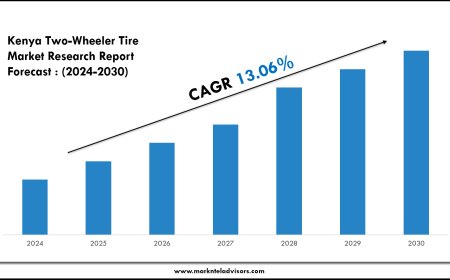Common Podiatry Billing Mistakes and How to Avoid Them

Podiatry practices face a unique set of challenges when it comes to medical billing. From complex coding systems to frequent payer policy updates, the risk of billing errors is highand so are the consequences. Common podiatry billing mistakes can lead to claim denials, delayed payments, audits, and even compliance issues.
This article highlights the most frequent errors in podiatry billing and provides actionable solutions to help practices avoid them. Whether you're a solo practitioner or part of a larger podiatry group, optimizing your billing process is essential for sustaining profitability and compliance.
1.Using Incorrect CPT or ICD-10 Codes
One of the most common podiatry billing mistakes is using outdated or incorrect Current Procedural Terminology (CPT) or ICD-10 codes. Even a minor error in coding can result in claim denials or underpayments.
Example: A podiatrist performs debridement for a diabetic foot ulcer but uses a non-specific code. The claim may be denied for lack of medical necessity or incorrect documentation.
How to Avoid It:
-
Stay updated on annual changes to CPT and ICD-10 codes.
-
Invest in staff training and certification.
-
Use billing software with built-in code verification and cross-checking.
2.Missing or Incomplete Documentation
Podiatry procedures often require detailed documentation to prove medical necessity. Missing chart notes, lack of patient history, or incomplete procedure details can cause rejections or audits.
How to Avoid It:
-
Implement a standardized documentation process for each type of podiatric service.
-
Perform regular internal audits to ensure compliance.
-
Include supporting documentation with high-risk procedures such as nail avulsions or callus removals.
3.Improper Use of Modifiers
Modifiers clarify the specifics of a service provided, especially in surgical podiatry billing. Incorrect or missing modifiers can lead to claim rejections or reduced reimbursement.
Common Modifier Errors:
-
Forgetting to use modifier -59 (distinct procedural service).
-
Misapplying -25 (significant, separately identifiable E/M service).
How to Avoid It:
-
Train billing staff on correct modifier usage.
-
Review payer-specific guidelines as modifier rules can vary.
4.Failing to Verify Insurance and Eligibility
Submitting claims without verifying the patients insurance eligibility is a costly oversight. Patients may have coverage restrictions or may be out-of-network, resulting in denied claims or billing disputes.
How to Avoid It:
-
Verify insurance before each appointment, not just for new patients.
-
Use real-time eligibility tools provided by clearinghouses or practice management systems.
5.Billing for Non-Covered Services Without ABNs
Some podiatry services are considered routine foot care and are not covered unless certain medical conditions are present. Without an Advance Beneficiary Notice (ABN), you cant bill the patient if insurance denies the claim.
How to Avoid It:
-
Identify non-covered services based on payer policy.
-
Present ABNs to patients ahead of the procedure when required.
-
Keep signed ABNs on file for auditing purposes.
6.Lack of Medical Necessity
Medical necessity is the cornerstone of successful podiatry billing. A claim may be coded and submitted correctly but still denied if the payer deems the service unnecessary.
How to Avoid It:
-
Use diagnosis codes that clearly support the necessity of the treatment.
-
Document symptoms, duration, failed conservative treatments, and the impact on patient functionality.
-
Regularly review Local Coverage Determinations (LCDs) and payer policies.
7.Overlooking Timely Filing Deadlines
Every insurance company has a different timeframe for submitting claimsranging from 90 days to a year from the date of service. Missing these deadlines results in automatic denial.
How to Avoid It:
-
Track claim submission timelines by payer.
-
Implement a follow-up process for delayed or rejected claims.
-
Automate billing reminders with your practice management system.
8.Inaccurate Patient Demographics
Simple clerical errors like misspelled names, incorrect birthdates, or invalid policy numbers can lead to claim denials.
How to Avoid It:
-
Collect and confirm demographic details at every visit.
-
Use electronic check-in systems to reduce manual data entry.
-
Verify insurance cards during each visit.
9.Inadequate Follow-Up on Denied Claims
Failing to appeal or resubmit denied claims is essentially lost revenue. Many podiatry practices write off claims without reviewing the root cause of the denial.
How to Avoid It:
-
Assign a staff member to manage denials and appeals.
-
Use denial management reports to identify trends.
-
Create templates for appeal letters to speed up resubmissions.
10.Not Outsourcing When Necessary
As regulations and insurance requirements grow more complex, many podiatry offices struggle to keep up with billing demands. Relying solely on in-house staff may lead to more errors and lost revenue.
How to Avoid It:
-
Consider partnering with a professional podiatry billing services provider.
-
Choose a billing partner experienced in podiatric coding, Medicare regulations, and insurance appeals.
-
Ensure your vendor provides transparent reporting and KPI tracking.
Final Thoughts
Avoiding these common podiatry billing mistakes isnt just about protecting your revenueits about maintaining compliance, improving operational efficiency, and ensuring patient satisfaction. With proactive training, efficient workflows, and the right tools (or partners), podiatry practices can streamline their billing and collections processes.
Remember, billing errors are often not just financialrepeated mistakes can trigger audits or loss of payer trust. Take time to assess your current billing practices and consider whether your team has the resources needed to navigate the complexities of podiatry billing.








































